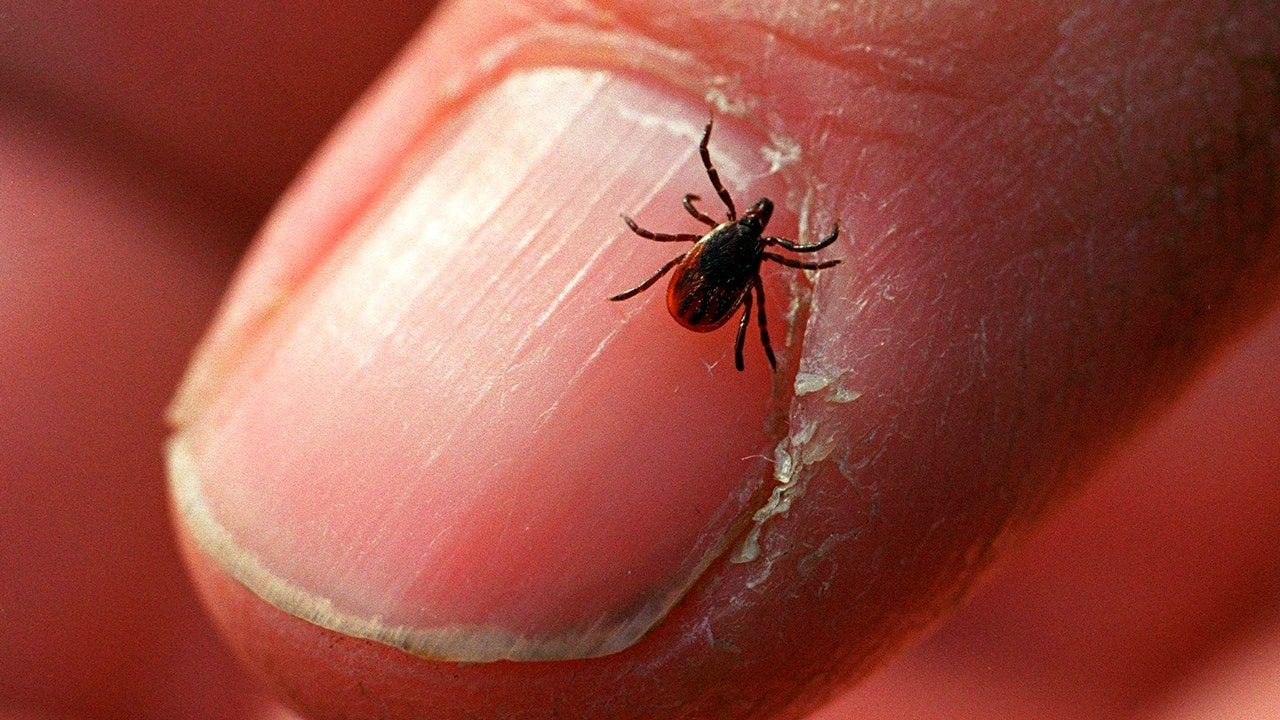Health
Ultrasound Pulses to Brain Send Mice Into a Hibernation-Like State

For many animals, life is a cycle of scarcity as well as plenty. Hibernating creatures curl up underground in winter, slowing their metabolism so they can make it to spring without food. Even laboratory mice, if deprived of food, can enter a state called torpor, a kind of standby mode that economizes energy.
It’s something humans have long fantasized about for ourselves: If we ever leave this planet and travel through space, we will experience our own time of scarcity. Science fiction writers tend to imagine a mysterious technology that keeps humans in stasis, able to survive centuries of silence before emerging into a new life. For now, it’s a technology that’s out of reach.
But as scientists work to understand states like torpor and hibernation, tantalizing details about how the brain controls metabolism have emerged. Researchers reported in the journal Nature Metabolism on Thursday that they’ve been able to send mice into a torpor-like state by targeting a specific part of the brain with short bursts of ultrasound. It’s unclear exactly why ultrasound has this effect, but the findings suggest that studying the neural circuits involved in torpor could reveal ways to manipulate metabolism beyond the lab.
Ultrasound devices, which generate high-frequency sound waves, are best known for their imaging powers. But they have also been used by neuroscientists to stimulate neurons. Correctly tuned, the soundwaves can travel deep into the brain, said Hong Chen, a professor of biomedical engineering at Washington University in St. Louis and an author of the new paper. In 2014, William Tyler, now at the University of Alabama, Birmingham, and his colleagues applied ultrasound to a sensory region in the brain and found that it enhanced a subject’s sense of touch. A growing body of work is exploring ultrasound as a treatment for disorders like depression and anxiety.
Curious about a brain region that regulates body temperature in rodents, Dr. Chen and her colleagues constructed tiny ultrasound mouse caps. The devices trained six bursts, each consisting of 10 seconds of ultrasound, on the selected area of the rodent’s brain. (Researchers who study the brain with ultrasound must tune their devices carefully to avoid heat that can damage tissues).
The mice, the researchers noticed, stopped moving. Measurements of their body temperature, heart rate and metabolism showed a pronounced dip. The mice stayed in this state for about an hour after the ultrasound bursts, and then returned to normal.
Looking closer at neurons involved in this response, the researchers identified a protein in their brain membranes, TRPM2, that appears to be sensitive to ultrasound; when the researchers reduced levels of the protein in mice, the mice became resistant to ultrasound’s effects.
That’s an important step toward understanding how ultrasound affects neurons, said Davide Folloni, a researcher at the Icahn School of Medicine at Mount Sinai in New York City, who studies the brain using ultrasound; the details have largely been elusive.
But it’s also possible that heat generated by the ultrasound, and not just the ultrasound itself, is affecting TRPM2 in the brains of mice, a point that was raised by Masashi Yanagisawa and Takeshi Sakurai of the University of Tsukuba in Japan, in separate interviews. The two have studied neurons in this brain area, and their connection to states of torpor. Both may be in play, Dr. Chen said.
In one of the most tantalizing parts of the study, the researchers checked to see whether animals that don’t typically experience torpor — rats — behaved differently when the brain region was stimulated with ultrasound. Indeed, they seemed to slow down, and their body temperatures dropped.
“We have to be careful with the rat data,” Dr. Chen cautions. So far, they only have information about temperature, not metabolic rate and other factors.
Could ultrasound be a way to change the metabolism of larger animals with no history of torpor, like humans? It’s an intriguing idea, Dr. Sakurai said.
“At this stage,” he said, “it remains an unanswered question.”

Health
fatty15 has the essential nutrient to ease stress and well-being

Sign Up
Create a free account to access exclusive content, play games, solve puzzles, test your pop-culture knowledge and receive special offers.
Already have an account? Login
Forgot your password?
Get back to the Sign In
Use left and right arrow keys to navigate between menu items.
Use escape to exit the menu.
Health
Summer is tick season, but these tips can help you avoid the bloodsucking bugs

Tick season is starting across the U.S., and experts are warning the bloodsuckers may be as plentiful as ever.
Another mild winter and other favorable factors likely means the 2024 tick population will be equal to last year or larger, some researchers say.
“It’s very bad and has only been getting worse,” said Susanna Visser of the Centers for Disease Control and Prevention.
TICK BITES AND LYME DISEASE: WHAT TO DO IF A TICK BITES YOU OR YOUR PET
An increasing variety of ticks are pushing into new geographical areas, bringing unusual diseases. Exotic southern species like the Gulf Coast tick and the lone star tick are being detected in New York and other northern states, for example.
But the tick that experts warn of the most is a common blacklegged tick, which is found mainly in forests and spreads Lyme disease. Infection rates begin to peak in May, and U.S. health officials estimate nearly half a million Lyme disease infections happen annually.
Here’s a look at what’s expected this year and how you can protect yourself.
An adult deer tick, also known as the blacklegged tick, crawls on a fingernail at Connetquot State Park in Oakdale, New York on Dec. 27, 2011. (Bill Davis/Newsday RM via Getty Images)
TICK FACTS
Ticks are small, eight-legged bloodsucking parasites — arachnids, not insects — that feed on animals and sometimes people. Some ticks are infected with germs that can cause illness, and they spread those germs when they bite.
There is no widely accepted estimate of how many ticks there are from one year to the next, but there is a scientific consensus that they are an increasingly common health hazard in large portions of the United States.
Blacklegged ticks — also known as deer ticks, since they feed on deer — are among the most common ticks in the eastern half of the U.S. They were plentiful centuries ago, then diminished when forests were cut down and deer were hunted, and rebounded alongside deer and wooded suburbs. The ticks have spread out from pockets in New England and the Midwest over a wider range.
Tick populations cycle throughout the year and their numbers depend on a few factors. They like warm, humid weather, and more can be seen after a mild winter. The more deer and mice available to feed matters, too.
Overall, the blacklegged tick population has been expanding for at least four decades, researchers say.
“This is an epidemic in slow motion,” said Rebecca Eisen, a CDC research biologist and tick expert.
2024 TICK SEASON FORECAST
Weather can play a role in the severity of a tick season.
Very cold, dry winters can whittle down tick populations, but recent winters have been mild — a trend some attribute to climate change.
As Scott Williams, a tick researcher at the Connecticut Agricultural Experiment Station, said: “Winters are no longer limiting the tick population.”
Ticks can withstand the heat but tend to almost hibernate when it’s a dry summer. That happened in Maine in 2020 through 2022, said Chuck Lubelczyk, a vector ecologist at the MaineHealth Institute for Research.
But last year was a very wet year, and tick activity multiplied in Maine — the state with the highest incidence of Lyme disease in the country. Weather service predictions call for higher temperatures and precipitation, so “on paper, at least, it could be a very good year for the ticks,” Lubelczyk said.
In Wisconsin, adult ticks were out longer than usual due to a mild winter. The tick nymphs are starting to emerge, and a wet spring is setting the stage for the possibility that the population will be robust, said Xia Lee, an entomologist at the Wisconsin Department of Health Services.
Ditto New York.
“It will be as bad as last year, or worse,” said Saravanan Thangamani, who studies ticks and tickborne diseases at SUNY Upstate Medical University in Syracuse.
WHAT IS LYME DISEASE?
Not all ticks are infected with disease-causing germs — about 20% to 30% of the blacklegged tick nymphs that emerge in the Northeast and Midwest this spring and into summer will be carrying the bacteria that causes Lyme disease, experts estimate.
Lyme disease symptoms tend to start between three and 30 days after a bite occurs and can include fever, headache, fatigue and a bull’s-eye-like rash. If you get bitten and develop symptoms, see a doctor to get treated with antibiotics.
HOW TO KEEP TICKS OFF OF YOU
Experts say the best thing to do is take steps to avoid a tick bite in the first place.
If you go outdoors, make note of wooded areas and where grassy properties start bleeding into wooded areas. Ticks tend to perch on ankle-level vegetation with their upper legs outstretched, waiting to latch on to an unsuspecting dog or human.
Try to walk in the middle of paths, wear light-colored and permethrin-treated clothing and use Environmental Protection Agency (EPA)-registered insect repellents.
HOW TO CHECK FOR TICKS
When you come inside, check for ticks. They can be found anywhere on the human body, but common spots include around the waist, behind the knees, between fingers and toes, on underarms, in the belly button and around the neck or hairline.
They are harder to see when they are young, so look carefully and immediately pull them off with tweezers.
The CDC does not recommend sending individual ticks to testing services for analysis, because a person might get more than one tick bite and the results from the tested tick may not be sufficient information.
Health
Pizza for Weight Loss? Top MD Says This Dough Makes It Possible

Sign Up
Create a free account to access exclusive content, play games, solve puzzles, test your pop-culture knowledge and receive special offers.
Already have an account? Login
Forgot your password?
Get back to the Sign In
Use left and right arrow keys to navigate between menu items.
Use escape to exit the menu.
-

 Politics1 week ago
Politics1 week agoRFK Jr said a worm ate part of his brain and died in his head
-

 World1 week ago
World1 week agoPentagon chief confirms US pause on weapons shipment to Israel
-

 World1 week ago
World1 week agoConvicted MEP's expense claims must be published: EU court
-

 News1 week ago
News1 week agoStudents and civil rights groups blast police response to campus protests
-

 Politics1 week ago
Politics1 week agoCalifornia Gov Gavin Newsom roasted over video promoting state's ‘record’ tourism: ‘Smoke and mirrors’
-

 Politics1 week ago
Politics1 week agoOhio AG defends letter warning 'woke' masked anti-Israel protesters they face prison time: 'We have a society'
-

 News1 week ago
News1 week agoNine Things We Learned From TikTok’s Lawsuit Against The US Government
-

 Politics1 week ago
Politics1 week agoBiden’s decision to pull Israel weapons shipment kept quiet until after Holocaust remembrance address: report















